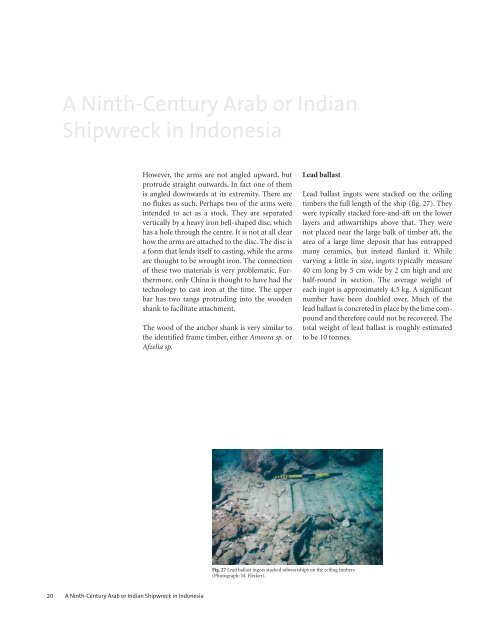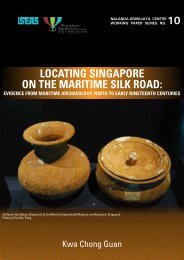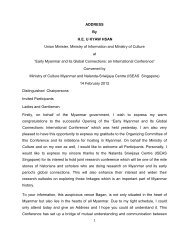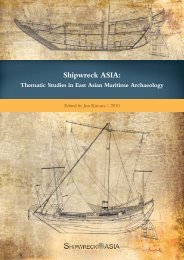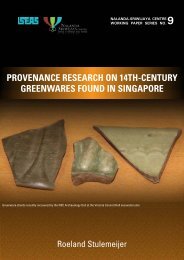Create successful ePaper yourself
Turn your PDF publications into a flip-book with our unique Google optimized e-Paper software.
A Ninth-Century Arab or Indian<br />
Shipwreck in Indonesia<br />
However, the arms are not angled upward, but<br />
protrude straight outwards. In fact one of them<br />
is angled downwards at its extremity. There are<br />
no flukes as such. Perhaps two of the arms were<br />
intended to act as a stock. They are separated<br />
vertically by a heavy iron bell-shaped disc, which<br />
has a hole through the centre. It is not at all clear<br />
how the arms are attached to the disc. The disc is<br />
a form that lends itself to casting, while the arms<br />
are thought to be wrought iron. The connec tion<br />
of these two materials is very problematic. Further<br />
more, only China is thought to have had the<br />
technology to cast iron at the time. The upper<br />
bar has two tangs protruding into the wooden<br />
shank to facilitate attachment.<br />
The wood of the anchor shank is very similar to<br />
the identified frame timber, either Amoora sp. or<br />
Afzelia sp.<br />
Lead ballast<br />
Lead ballast ingots were stacked on the ceiling<br />
timbers the full length of the ship (fig. 27). They<br />
were typically stacked fore-and-aft on the lower<br />
layers and athwartships above that. They were<br />
not placed near the large balk of timber aft, the<br />
area of a large lime deposit that has entrapped<br />
many ceramics, but instead flanked it. While<br />
varying a little in size, ingots typically measure<br />
40 cm long by 5 cm wide by 2 cm high and are<br />
half-round in section. The average weight of<br />
each ingot is approximately 4.5 kg. A significant<br />
number have been doubled over. Much of the<br />
lead ballast is concreted in place by the lime compound<br />
and therefore could not be recovered. The<br />
total weight of lead ballast is roughly estimated<br />
to be 10 tonnes.<br />
Fig. 27 Lead ballast ingots stacked athwartships on the ceiling timbers<br />
(Photograph: M. <strong>Flecker</strong>).<br />
20 A Ninth-Century Arab or Indian Shipwreck in Indonesia


